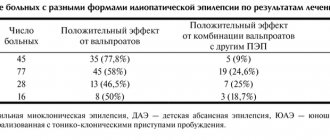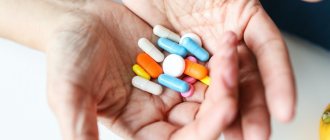Home | About us | Delivery | Advertisers | Login | Registration
Delivery on Sundays and holidays does not work!
- Medicines
- dietary supplementsVitamins
- Categories from A to Z
- Brands from A to Z
- Products from A to Z
- Medical equipment
- beauty
- Child
- Care
- Honey products appointments
- Herbs and herbal teas
- Medical nutrition
- Journey
- Making medicinesStock
Pharmacy online is the best pharmacy in Almaty, delivering medicines to Almaty. An online pharmacy or online pharmacy provides the following types of services: delivery of medicines, medicines to your home. Online pharmacy Almaty or online pharmacy Almaty delivers medicines to your home, as well as home delivery of medicines in Almaty.
my basket
Apteka84.kz is an online pharmacy that offers its customers medicines, medicinal and decorative cosmetics, dietary supplements, vitamins, baby food, intimate products for adults, medical equipment and thousands of other medical and cosmetic products at low prices. All data presented on the Apteka84.kz website is for informational purposes only and is not a substitute for professional medical care. Apteka84.kz strongly recommends that you carefully read the instructions for use contained in each package of medicines and other products. If you currently have any symptoms of the disease, you should seek help from a doctor. You should always tell your doctor or pharmacist about all the medicines you take. If you feel you need further help, please consult your local pharmacist or contact our GP online or by telephone.
© 2022 Pharmacy 84.
Nosological classification (ICD-10)
- F95 Tiki
- G25.3 Myoclonus
- G40 Epilepsy
- G40.0 Localized (focal) (partial) idiopathic epilepsy and epileptic syndromes with seizures with focal onset
- G40.1 Localized (focal) (partial) symptomatic epilepsy and epileptic syndromes with simple partial seizures
- G40.2 Localized (focal) (partial) symptomatic epilepsy and epileptic syndromes with complex partial seizures
- G40.3 Generalized idiopathic epilepsy and epileptic syndromes
- G40.4 Other types of generalized epilepsy and epileptic syndromes
- G40.6 Grand mal seizures, unspecified [with or without petit mal seizures]
- G40.8 Other specified forms of epilepsy
- G40.9 Epilepsy, unspecified
- R25.2 Cramp and spasm
- R56.0 Convulsions during fever
Compound
| Syrup | 100 ml |
| active substance: | |
| sodium valproate | 5.764 g |
| excipients: methyl parahydroxybenzoate - 0.1 g; propyl parahydroxybenzoate - 0.02 g; sucrose (67% solution, calculated as dry matter) - 60 g; sorbitol 70% (crystallizing) - 15 g; glycerol - 15 g; artificial cherry flavor - 0.03 g; concentrated hydrochloric acid or concentrated sodium hydroxide solution - qs to pH = 7.3–7.7; purified water - qs up to 100 ml |
Depakine syrup det 57.64 mg/ml 150 ml x1
Trade name: Depakine International name: Valproic acid
Release form: syrup 5.7% (dark glass bottles) 150 ml /complete with measuring spoon/
Composition: valproic acid 250 mg - 5 ml
Pharmacological group: antiepileptic drug
Pharmacological group according to ATK: N03AG01 (Valproic acid)
Pharmacological action: sedative, central muscle relaxant, antiepileptic, GABA transaminase inhibitory,
Description: White fine-crystalline powder, easily soluble in water and ethanol.
Indications: Epilepsy of various origins.
Epileptic seizures (including generalized and partial seizures, as well as against the background of organic brain diseases).
Changes in character and behavior (due to epilepsy).
Febrile convulsions (in children), childhood tics.
Manic-depressive psychosis with a bipolar course, not amenable to treatment with Li+ drugs or other drugs.
Specific syndromes (Vest, Lennox-Gastaut).
Dosage regimen: Orally, during meals or immediately after meals, without chewing, with a small amount of water, 2-3 times a day. The syrup can be mixed with any liquid or added to small amounts of food.
The initial dose for monotherapy for adults and children weighing more than 25 kg is 5-15 mg/kg/day, then this dose is gradually increased by 5-10 mg/kg/week. The maximum dose is 30 mg/kg/day (can be increased if it is possible to monitor plasma concentrations to 60 mg/kg/day).
With combination therapy in adults - 10-30 mg/kg/day, followed by increasing the dose by 5-10 mg/kg/week.
CHILDREN: Depending on body weight: - with body weight less than 25 kg, the average daily dose for monotherapy is 15-45 mg/kg, maximum - 50 mg/kg. - Controlled-release tablets should not be used if your body weight is less than 20 kg. Depending on age: - newborns - 30 mg/kg, - from 3 to 10 years - 30-40 mg/kg/day (up to 1 year - in 2 doses, in older people - in 3 doses. With combination therapy - 30 -100 mg/kg/day.
IV stream, 400-800 mg or IV drip, at a rate of 25 mg/kg for 24, 36, 48 hours. If you decide to switch to IV administration after oral administration, the first administration is carried out at a dose of 0.5-1 mg/kg/hour 4-6 hours after the last oral dose.
Contraindications: Hypersensitivity, liver failure, acute and chronic hepatitis, pancreatic dysfunction, porphyria, hemorrhagic diathesis, severe thrombocytopenia
pregnancy (first trimester), lactation period.
Side effects: From the central nervous system: tremor, rarely - changes in behavior, mood or mental state (depression, fatigue, hallucinations, aggressiveness, hyperactive state, psychosis, unusual agitation, restlessness or irritability), ataxia, dizziness, drowsiness, headache , encephalopathy, dysarthria, enuresis, stupor, impaired consciousness, coma.
From the sensory organs: diplopia, nystagmus, flashing “spots” before the eyes.
From the digestive system: nausea, vomiting, gastralgia, loss of appetite or increased appetite, diarrhea, hepatitis, rarely - constipation, pancreatitis, up to severe injuries with a fatal outcome (in the first 6 months of treatment, more often for 2-12 weeks).
From the hematopoietic organs and hemostasis system: inhibition of bone marrow hematopoiesis (anemia, leukopenia), thrombocytopenia, decreased fibrinogen content and platelet aggregation, leading to the development of hypocoagulation (accompanied by prolongation of bleeding time, petechial hemorrhages, bruises, hematomas, bleeding, etc.).
Metabolism: loss or increase in body weight.
Allergic reactions: skin rash, urticaria, angioedema, photosensitivity, malignant exudative erythema (Stevens-Johnson syndrome).
Laboratory indicators: hypercreatininemia, hyperammonemia, hyperglycinemia, hyperbilirubinemia, slight increase in the activity of “liver” transaminases, LDH (dose-dependent).
From the endocrine system: dysmenorrhea, secondary amenorrhea, breast enlargement, galactorrhea.
Other: peripheral edema, alopecia.
Overdose Symptoms: nausea, vomiting, dizziness, diarrhea, respiratory dysfunction, muscle hypotonia, hyporeflexia, miosis, coma. Treatment: gastric lavage (no later than 10-12 hours), intake of activated carbon, forced diuresis, maintenance of vital functions, hemodialysis.
Pharmacodynamics: Antiepileptic drug, has a central muscle relaxant and sedative effect. The mechanism of action is associated with an increase in the content of GABA in the central nervous system (due to inhibition of GABA transferase, as well as a decrease in the reuptake of GABA in the brain), resulting in a decrease in the excitability and convulsive readiness of the motor areas of the brain. According to another hypothesis, it acts on sites of postsynaptic receptors, simulating or enhancing the inhibitory effect of GABA. A possible direct effect on membrane activity is associated with changes in K+ conductance. Improves the mental state and mood of patients, has antiarrhythmic activity.
Pharmacokinetics: Absorption - high, food slightly reduces the rate of absorption, bioavailability - 100%. TCmax of capsules and syrup - 1-4 hours, tablets - 3-4 hours, controlled-release tablets - 2-8 hours, with intravenous administration - by the end of 1 hour of infusion. Css is achieved on days 2-4 of administration (depending on the intervals between doses). Therapeutic plasma concentrations range from 50-150 mg/l. The pharmacological and therapeutic effects of controlled-release formulations are not always dependent on plasma concentrations. Volume of distribution - 0.2 l/kg. Plasma protein binding is 90-95% (at a plasma concentration of up to 50 mg/l), at a concentration of 50-100 mg/l it is reduced to 80-85%; with uremia, hypoproteinemia and liver cirrhosis, plasma protein binding is also reduced.
Penetrates through the placental barrier and the BBB, excreted in breast milk (the concentration in breast milk is 1-10% of the concentration in maternal plasma).
The content in the CSF correlates with the size of the fraction not bound to proteins. Metabolized by glucuronidation and oxidation in the liver, T1/2 - 8-22 hours.
Valproic acid (1-3%) and its metabolites (in the form of conjugates, oxidation products, including ketometabolites) are excreted by the kidneys, small amounts are excreted in feces and exhaled air.
When combined with other medicinal drugs, T1/2 can be 6-8 hours due to the induction of metabolic enzymes; in patients with impaired liver function, elderly patients and children under 18 months, it can be significantly longer.
The prolonged form is characterized by the absence of absorption latency, slow absorption, lower (25%), but relatively more stable plasma concentrations between 4 and 14 hours.
Special instructions: During treatment, it is advisable to monitor the activity of “liver” transaminases, bilirubin levels, peripheral blood patterns, blood platelets, the state of the blood coagulation system, amylase activity (every 3 months, especially when combined with other antiepileptic drugs).
For patients receiving other antiepileptic drugs, transfer to valproic acid should be carried out gradually, reaching a clinically effective dose after 2 weeks, after which gradual withdrawal of other antiepileptic drugs is possible. In patients who have not received treatment with other antiepileptic drugs, a clinically effective dose should be achieved after 1 week.
The risk of side effects from the liver is increased during combination anticonvulsant therapy, as well as in children.
Drinks containing ethanol are not allowed.
Before surgery, a general blood test (including platelet count), determination of bleeding time, and coagulogram parameters are required.
If symptoms of an “acute” abdomen occur during treatment, before surgery, it is recommended to determine the level of amylase in the blood to exclude acute pancreatitis.
During treatment, one should take into account the possible distortion of the results of urine tests in diabetes mellitus (due to an increase in the content of keto products) and indicators of thyroid function.
If any acute serious side effects develop, you should immediately discuss with your doctor the advisability of continuing or stopping treatment.
To reduce the risk of developing dyspeptic disorders, it is possible to take antispasmodics and enveloping drugs.
Abruptly stopping valproic acid may lead to an increase in epileptic seizures.
During the treatment period, care must be taken when driving vehicles and engaging in other potentially hazardous activities that require increased concentration and speed of psychomotor reactions.
With caution: Suppression of bone marrow hematopoiesis (leukopenia, thrombocytopenia, anemia), organic diseases of the brain, history of liver and pancreas diseases, hypoproteinemia, mental retardation in children, congenital enzymopathies, renal failure
PREGNANCY: use with caution during the 2nd and 3rd trimesters Category of effect on the fetus D
CHILDREN: under three years of age, use with caution (except for syrup)
Interaction: Valproic acid enhances the effects, incl. side effects, other antiepileptic drugs (phenytoin, lamotrigine), antidepressants, antipsychotic drugs (neuroleptics), anxiolytics, barbiturates, MAO inhibitors, thymoleptics, ethanol. The addition of valproate to clonazepam in isolated cases can lead to increased severity of absence status.
With simultaneous use of valproic acid with barbiturates or primidone, an increase in their concentration in plasma is observed.
Increases T1/2 of lamotrigine (suppresses liver enzymes, causes a slowdown in the metabolism of lamotrigine, as a result of which T1/2 is extended to 70 hours in adults and up to 45-55 hours in children).
Reduces the clearance of zidovudine by 38%, while its T1/2 does not change.
Tricyclic antidepressants, MAO inhibitors, antipsychotic drugs (neuroleptics), and other drugs that lower the threshold of seizure activity reduce the effectiveness of valproic acid.
When combined with salicylates, an increase in the effects of valproic acid is observed (displacement from the connection with plasma proteins), enhances the effect of antiplatelet agents (ASA) and indirect anticoagulants.
When combined with phenobarbital, phenytoin, carbamazepine, mefloquine, the content of valproic acid in the blood serum decreases (acceleration of metabolism).
Felbamate increases the concentration of valproic acid in plasma by 35-50% (dose adjustment is necessary).
With simultaneous use of valproic acid with ethanol and other drugs that depress the central nervous system (tricyclic antidepressants, MAO inhibitors and antipsychotic drugs), increased depression of the central nervous system is possible.
Ethanol and other hepatotoxic drugs increase the likelihood of developing liver damage.
Valproic acid does not induce liver enzymes and does not reduce the effectiveness of oral contraceptives.
Myelotoxic drugs - increased risk of inhibition of bone marrow hematopoiesis.
Dispensed from pharmacies: Dispensed by prescription.
Drug registration number: P No. 012595/01-2001
Date of registration (re-registration) of the drug: 01/19/2001


